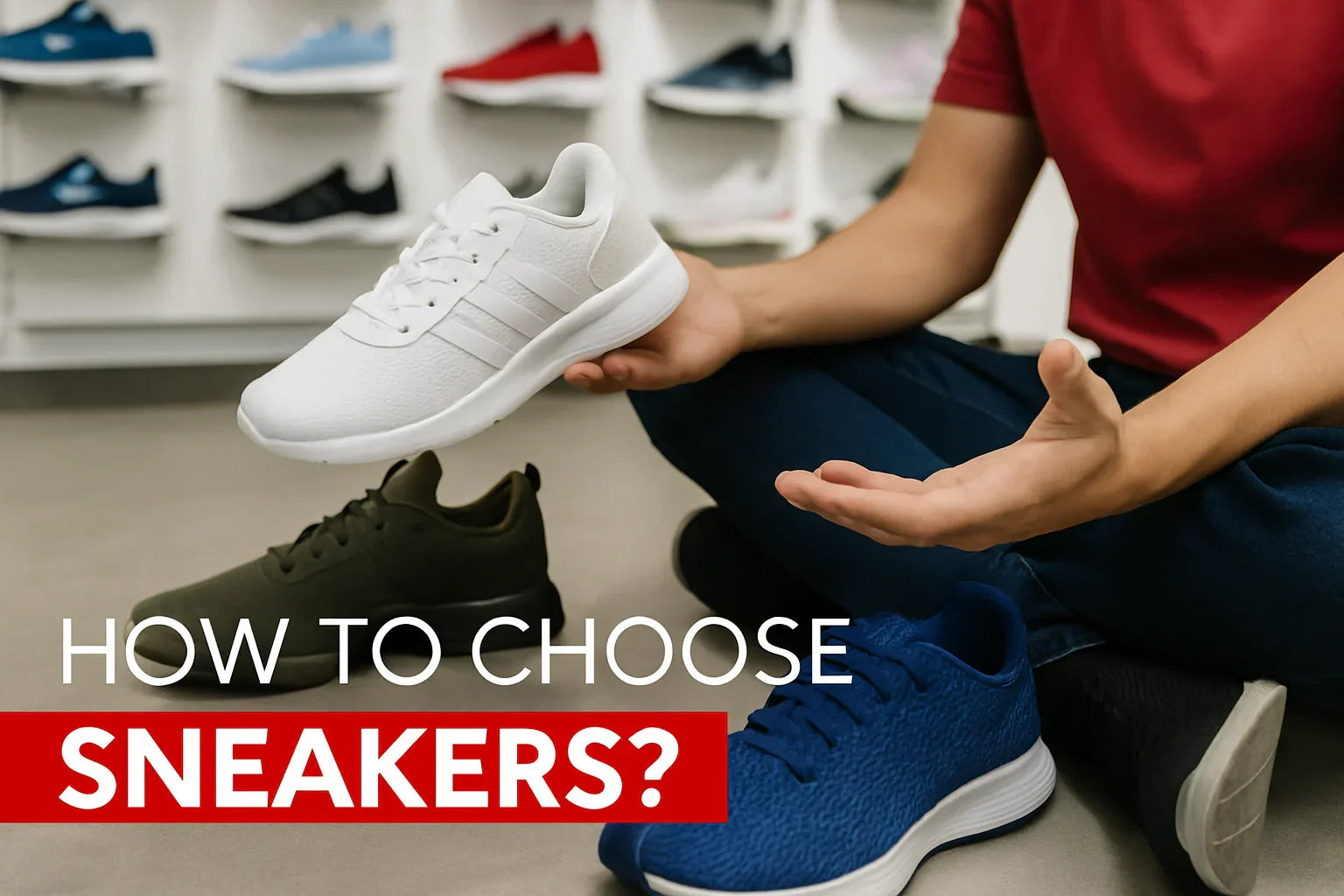How to Choose Sneakers?
Your foot type, degree of activity, fit, cushioning, support, and sole traction will help you select the appropriate footwear. Whether your purchase is for jogging, gym sessions, or leisure use, the best sneakers should fit your way of life and offer performance as well comfort.
Why Selection of Sneakers Counts?
Sneakers impact your posture, joint health, and movement efficiency, not only your wardrobe choice. Particularly in high-impact pursuits like jogging or training, the incorrect pair might cause discomfort, tiredness, or even injuries.
Step-by-Step: Selecting the Correct Sneakers
1. Clarify Your Goal Running:
Search for lightweight, cushioned trainers with a responsive midsole.
Training: Seek multi-directional stability and support.
Walking calls for first arch support and heel cushioning.
Daily Wear: Emphasize breathability, comfort all around, and style.
Pro Tip: Never use just one pair for everything. Running long distances calls for cross-training shoes; vice versa.
2. Know Your Own Foot Type
See a podiatracle or use the wet foot test:
Search for stability or motion control shoes for flat feet.
Choose flexible, cushioned sneakers for high arches.
Neutral: Most regular shoes will fit and be comfortable; pay more attention to fit.
3. Check the feel and fit.
Leave at the toe roughly a thumb's width of room.
Make sure the fit at the midfoot and heel is snug—not tight.
Try on the same sort of socks you would wear during exercise.
4. Try the cushioning and sole.
Good trainers should absorb impact and return energy.
The shoe should bend where your toes normally bend on a flex test.
For outdoor or gym use, seek for rubber soles with strong traction.
5. Select durable, breathable materials
For breathability, mesh or engineered knit uppers
Long-term support calls for TPU, or EVA midsoles.
Durability calls for reinforced toe caps and heel counters.
Mistakes When Purchasing Sneakers
- Selecting based just on appearances
- Ignoring your arch type or foot form
- Wearing worn-out or outdated sneakers
- Purchasing the wrong size or omitting a break-in period
Prowolf's best all-round sneaker choices
- Perfect for cardio, running, and daily usage is Prowolf GlideFit Runner.
- Ideal for gym, HIIT, and mixed training is Prowolf FlexCore Trainer.
- Perfect for casual wear with all-day comfort is Prowolf Urban Ease Sneaker.
Selecting footwear is more about fit to your body, activities, and comfort than it is about trends. Our sneakers at Prowolf are made to fit your demands, whether they be for pavement, the gym, or just casual walking through life.
FAQ
How can I pick out a pair of sneakers?
Determine your goal first: walking, running, the gym, or casual attire. Next, pay attention to sole grip, breathability, support, cushioning, and fit. Make sure they fit comfortably without being too tight by trying them on with your normal socks.
How do I choose which sneakers to purchase?
Type of activity (e.g., running versus cross-training)
Arch type and foot shape (flat, neutral, or high arch)
Breathability and material
Shock absorption and cushioning
Budget and style
Remain loyal to reputable companies that sell shoes tailored to a particular category, such as Prowolf.
What should I look for when purchasing sneakers?
Fit: Your toe and shoe end should be thumb-width apart.
Support: Foot-specific arch and heel support
Cushioning: Depending on how intense your activity is
Non-slip traction for outdoor or gym use
Material: engineered knit or breathable mesh
How can one determine whether a sneaker is good?
An excellent sneaker
feels cozy right out of the box.
provides strong arch and heel support.
features sturdy sole construction and fine stitching.
doesn't rub against or create pressure points
meets the requirements of your particular activity.
Do sneakers need to be a size larger?
Not always. Sneakers are typically a half size up from your formal shoes and should fit true to size with some toe room. However, each brand has different sizes, so always consult the brand's chart and, if at all possible, try them on.
How can one tell if a shoe is of high quality?
Sturdy materials such as rubber outsoles and EVA midsoles
Stitching with reinforcement, not just glue
Weight balance that is constant (not heavy in one area)
Reliable brand craftsmanship
Bonus: Try bending the shoe; the toe box, not the midfoot, should flex.



Share:
Are Basketball Shoes Non Marking?
How to Choose Best Women Gym Shoes?